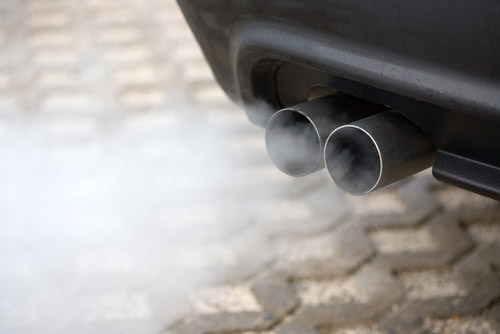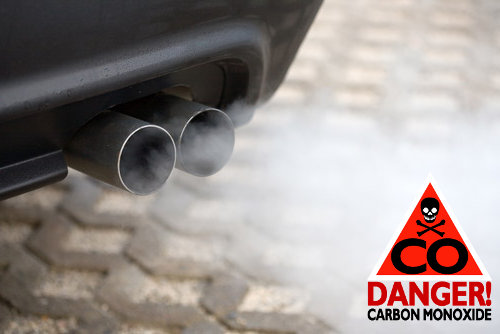Exhaust gas
Exhaust gases are at a material conversion process occurring, no longer usable gaseous waste products. In common parlance, are referred to as flue gases, so that exhaust gases from a combustion.
The DIN EN 1443 defines exhaust gases so that these only gaseous combustion products include, but are solid black ( correctly shining soot ) and liquid water. Flue gas and smoke containing soot admixtures. The all-encompassing term would be volatile combustion products. Depending on the textual context, also the names of combustion gases or exhaust rarely be used.
Chemically, are exhaust gases, an aerosol, which is a dispersion ( a heterogeneous mixture ), from solid or liquid particles suspended in the gases.
Most gases are harmful and dangerous to humans and the environment. For technical and industrial plants, the emission is common and plant-specific and legally binding.
Exhaust gases by origin
Exhaust gases from internal combustion engines
The term " exhaust " is common, especially in internal combustion engines ( internal combustion engines and gas turbines). If a motor vehicle is a compact emission control system, a catalyst usual and mandatory in many countries; Moreover, all new diesel car have a diesel particulate filter.
The flow energy of the exhaust gases of internal combustion engines can be used to drive a turbocharger, the precompressed combustion air of the engine and thus an increased supply of the air-fuel mixture and thus permits a higher engine performance and an improved efficiency of the motor.
To use the thermal energy of the exhaust gases of large internal combustion engines, such as on ships, the so-called exhaust gas boiler can be used.
A reduction of pollutant emissions in internal combustion engines can be mainly achieved through optimal combustion control in terms of temperature and air ratio.
Waste gases from combustion plants technical
Exhaust gases from industrial scale, stationary heaters and incinerators (eg power plants ) are commonly referred to as flue gases, even if the exhaust gas in the classical sense does not contain a significant "smoke" (soot and dust particles ), such as the virtually dust-free exhaust gas from gas furnaces or exhaust gas after flue gas cleaning system (dust ).
Combustion calculations with the corresponding exhaust gas compositions are particularly efficient possible with a computational algorithm for the Boie scope heating technology.
Exhaust gases from fireplaces and fires
" Fumes ", ie exhaust gases from open fires, smaller fireplaces as storage or grill fires and fires in particular are commonly referred to as rare smoke, also called flue gases.
Cold gases that do not occur in burns
Cold gases (<100 ° C) that does not originate from combustion, but from any other process, and mainly consist of air, also referred to as " air ". Such exhaust may vary according to type of process also be severely polluted, especially dusts, vapors, volatile organic compounds, etc.
Environment and human health
Exhaust gases contain no cleaning usually polluting, environmentally and harmful pollutants. For reasons of environmental protection, the countries are legal provisions to limit the pollutants. In Germany the delivery of such emissions under the Federal Emission Control Act ( Federal Pollution Control Act ) with the corresponding implementing regulations ( BlmSchV ), and / or the Technical Instructions on Air Quality Control (TA Luft ) is regulated. To achieve the specified maximum limits in these regulations often an exhaust gas cleaning required. A high chimney in addition, the dispersion of the emission control and dilution can be achieved.










